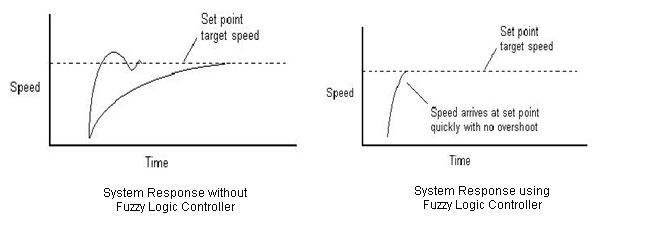First generation of fuzzy hardware was of analogue type and came from Japan in 1980’s. These processors used fuzzy gates in computation having switching times in nanoseconds with accuracy within 0.1%. However, they never found their way out of the research mainly due to lack of programmability. Second generation was Digital Fuzzy Processors. The name can be considered to be a misnomer as something can either be digital, two valued or fuzzy which is continuous. These digital processors however worked on fuzzy instruction sets utilizing multilayered structure in interfacing.
An interface layer fetched the fuzzy inputs which were then written onto the fuzzy processor via the host MCU communicating with the fuzzy processor through a Dual Port Ram (DPRAM). This however had a disadvantage of increased latency, complexity of code and overhead for communication between the two processors. These successfully made into the market in 1990’s but were soon to be succeeded by the third generation of Integrated Fuzzy Processors. It can be achieved by two techniques, by integrating the two co-processors on the same chip thus increasing the speed and reducing communication overhead. This however leads to increase in chip size.
Another approach is to enhance the existing instruction set. This offers threefold increase in computation of FL while achieving compactation of the code at the same time. The only problem is that this needs the redesigning of the MCU.

The curves shown above are the typical of a linear first order system using conventional control and fuzzy logic, think of them as speed control system. The improvement of fuzzy system over conventional mathematically modeled system is quite evident in the form of lesser time taken to reach the desired speed and lesser overshoots.
But there is a problem with fuzzy logic when used as a standalone solution. It works by evaluating each and every rule, greater the number of rules, better the system. Further, these rules are predefined making the system data set dependent and non-adaptive. Thus to make these systems more self-reliant, a black box of Neural Networks is put in between the inputs and the fuzzy processor to compute the set of membership functions and constructing the rule matrix. It is this clever combination of the two that leads us to better systems and a new dimension called – Neurofuzzy.
Anti-Lock braking systems that come in most modern cars employ fuzzy systems. Basically fuzzy system can be employed in any control system where fast and tight control is required. Diverse fields ranging from the day to day appliances like an intelligent washing machine which senses the amount of clothes and decides the type of washing, to traffic light control system for increased efficiency in traffic management, to cognitive air conditioning, to sophisticated research fields like language processing and artificial intelligence to industrial applications like robotic control as a replacement for the PID controllers have found usage and wide scale acceptance of Fuzzy Logic.
United Kingdom Transplant Support Service Authority uses FL in prioritizing the kidney waiting list. On the first sight itself, fuzzy logic looks more appealing to a human mind because of the innate similarity in the decision making processes of the brain than any form of two valued logic which always leaves scope for ‘What if’s’. Thus while researchers might still argue that fuzzy logic is just another manifestation of probability or there is nothing fuzzy about fuzzy logic, they sure cannot underrate the advancements that fuzzy logic has helped in achieving.
Filed Under: Articles


Questions related to this article?
👉Ask and discuss on EDAboard.com and Electro-Tech-Online.com forums.
Tell Us What You Think!!
You must be logged in to post a comment.